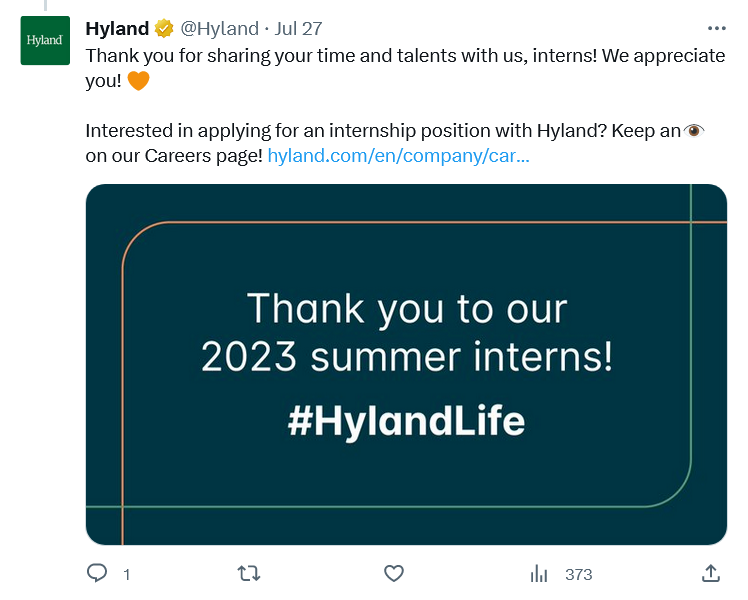Boosting tech diversity through outreach programs

• Outreach programs can help develop diverse pipelines.
• Developing outreach programs for young people can help re-write social conditioning.
• It’s best to target your outreach programs at pre-college students.
Diversity in tech is an increasingly critical element of any business’ successful technology strategy. There’s currently a skills shortage throughout the sector, and increasing diversity in the people who fill the roles that need filling only makes economic sense – on top of the fact that it’s 2023, and not having diversity in the tech workforce makes it feel like we’re living in an extra-long episode of Mad Men – and it’s really time we didn’t.
READ NEXT

Women in tech: the pipeline problem
But while it’s one thing to transform the internal processes of a company so they’re diversity-forward, it’s quite another thing to actively work on recruiting a diverse workforce – particularly given the tech industry’s longstanding reputation as exclusive, and mostly a white, male, cis heteronormative environment. How do you grow yourself a diverse pipeline of candidates coming into the industry – and to your company particularly?
Every statistic available says you should really be doing it – diverse teams are legendarily more creative, more productive, and more economically beneficial to companies than homogenous ones. But how do you go about it?
Identifying the heart of your outreach program.
We sat down with Caitlin Nowlin, from the software development company Hyland, about her work, because her role in the company’s tech outreach programs involves her actively seeking out – and inspiring – new faces to enter an industry which has traditionally not been as welcoming as it should have been.
THQ:
So how do you go about building a diverse pipeline of tech talent? Talk to us about how you start outreach programs to deliver those results.
CN:
It’s fair to say that I created our tech outreach programs, which didn’t exist in our company before. But when I started in the role, eight years ago, we recognized that there was a huge gap in our teams. Being a large software company, we needed to hire a lot of interns and a lot of software developers, but we noticed that a lot of our candidates didn’t have a lot of experience.
So we dug into that, and noticed it was because the schools in the area weren’t really teaching computer science. They weren’t teaching the skills that we needed – so, obviously, the candidates we were seeing didn’t have the skillsets we were looking for.
So we organically created these outreach programs to try and expose students to software development and the world of computer science at a younger age, to try and see whether, if they were exposed to it, this was something that they’d like to do.
They’d go off into school, learn it, study it, graduate with those skills we needed, and then come work in the tech workforce. So really, at the beginning, it was all just about recognizing the need to fill the gaps in our workforce, especially the skills gaps, and trying to come up with creative ideas that could reach the students. That’s what we did eight years ago, and it’s how we’ve built all of our outreach programs to where they are today.
Extending outreach programs where warranted.
THQ:
What was the general response back at the start? And how different is it from the response you get these days?
CN:
Oh, it was a lot of excitement. Actually, we only started with a couple of pilot programs in the summer of 2014. And the feedback that we received from the students on those programs was “We’d love to do something like this during the school year.” So we actually created an after-school program that happened throughout the school year.

From outreach programs come internships, and from there to careers in tech.
And it grew exponentially. Since then, we’ve created new outreach programs, and students are still really excited. These days, we ask “Has anyone been to a website?” Everyone usually answers yes – because after all, it’s 2023. But when we say “Okay, well, we’re gonna teach you how to create your own website,” they get really excited about it, and when you’re in the classroom with them, and you see them run into issues, and then you help them figure out the issues, they just get really excited.
It’s amazing to see how excited they are that they got to make something work. And I think that it’s continued and evolved – now everyone’s on their phones, using apps like Tiktok. We tell them straight – “We can teach you the skills to work on an app like that one day, or work for companies like that.” The excitement is definitely still there, it just shifts with the times and the ways they interact with the web.
THQ:
So you tap into what is more or less a pre-existing interest in apps like TikTok and translate that interest from the passive consumer of content into potential builders of apps? You introduce the idea that “This works because of all the stuff behind it… and we can teach you how to work with that”?
CN:
Yeah, absolutely. But also, we’re teaching computer science fundamentals, too. So if you rip down the layers, it’s all about logic and problem-solving and critical thinking. Those are skills that they’re going to utilize no matter what profession they end up in. And that’s one of the things I like to tell students through our programs is that, yes, you’re learning how to code today, but it doesn’t mean you’re being pigeonholed into being a software developer.

Teaching the fundamentals of computer science.
The skills you’re using to do what we’re doing today are going to be useful no matter what profession you follow – a lawyer, a police officer, a doctor, you know, whatever it is that you end up doing, the skills you’re learning today are important.
But, you know, if we do inspire them to go down the software development or tech path, that’s awesome, too.
The diversity mix.
THQ:
That brings us to a convoluted question. Is there a significant difference in the number of students taking up training between boys and girls, and between the kind of people who are traditionally expected to go into tech, and say, people from a minority background, who traditionally haven’t been expected by the industry to come and work in it?
CN:
There’s definitely a gap, racially, ethnically, and a gender gap. Absolutely, tech has traditionally been very much a male-dominated workforce. And we recognize that. I think the state of the industry recognizes that.
We try to do as much as we can through our outreach programs to expose students with those underrepresented backgrounds to the world of technology. It’s very important to have representation for students of all backgrounds.
But when you have an industry that doesn’t have a lot of that representation, that does make it difficult. But there are definitely organizations out there that you can partner with, doing this work.

Three (assigned) boys to every (assigned) girl. The state of the tech industry today…
I think it’s important, what we try and do, but we’re just one company, we’re just one small group, and there need to be more companies, more leaders that are helping to close these gaps that exist out there.
Something that was really exciting for us this summer is that we had a group of five high school interns working with us, and three out of those five were girls. And our chief technology officer was actually at a presentation with these five interns yesterday and was like “it’s really good to see that three out of the five of you are girls, when it’s usually one out of five. So that’s an interesting statistic.
Don’t miss your window.
Just over a quarter of the tech workforce is women. But the more girls that are able to take computer science classes in high school, the more likely they are to study it in college, and then the more likely they are to work in the tech industry.
So it’s definitely important to try and reach students at a younger age and expose them to the fun and the potential of careers in this industry. Because it’s almost too late by the time they get to college – ideas, dreams, career aspirations have often been pre-formed by then, and if they’ve never considered going into tech by that point, it’s much harder to persuade them of what the industry has to offer. They’ve already figured out what they want to do.
I mean, that was exactly my story – I didn’t go straight into tech by any means. I only went to school for what I knew growing up. But now, being in the industry and doing the work I’m doing, I wish that I would have gone to school for a more technical degree, I wish I would have taken that one class in college and realized, wait, this can be a career, and decided to take more classes like that.
THQ:
You wish there had been an outreach program you could have taken?
CN:
Ha. Yeah.
In Part 2 of this article, we’ll delve deeper into the impact of a young intervention in the education process when it comes to increasing diversity in the tech pipeline.









